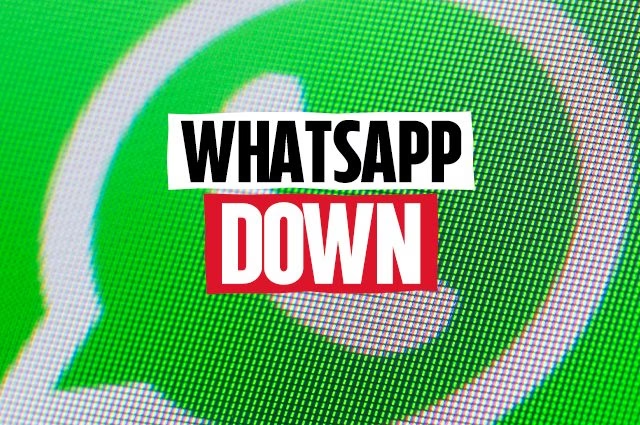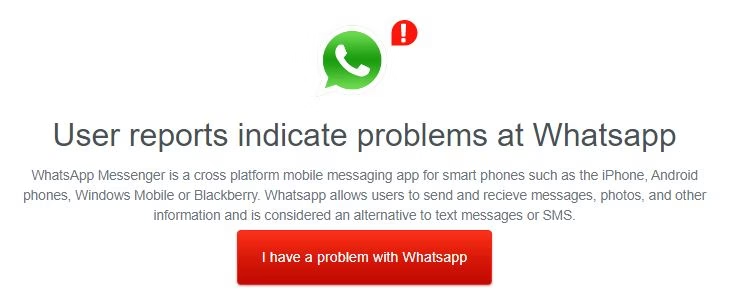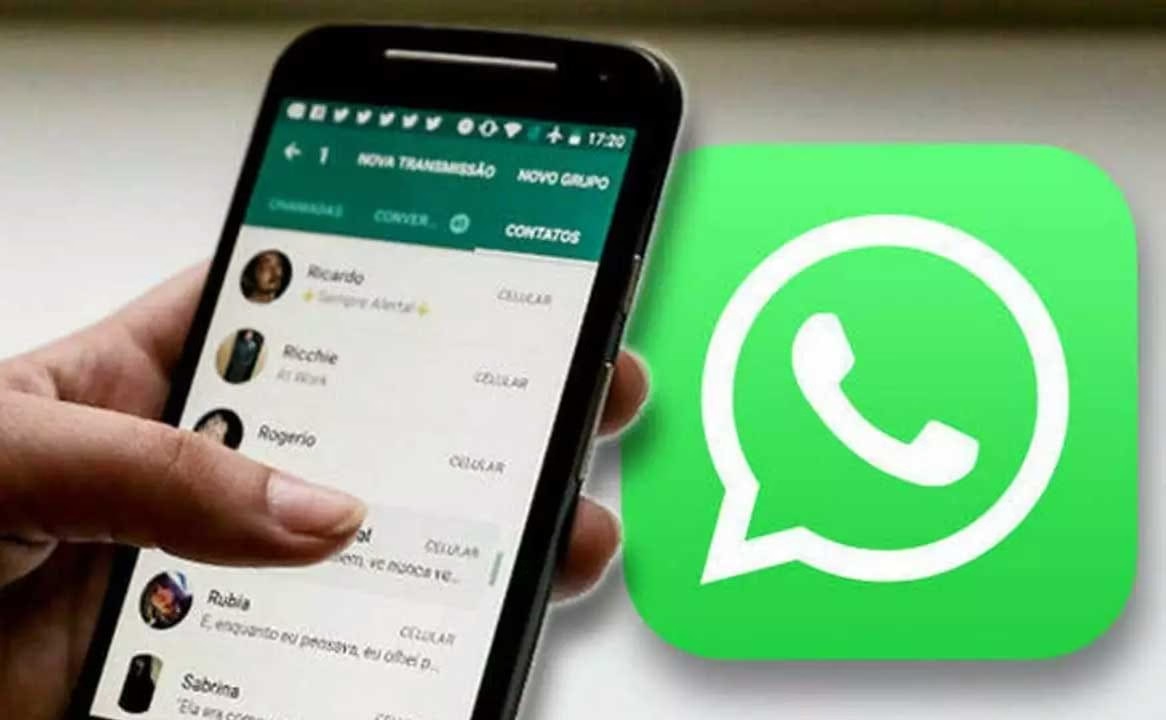WhatsApp Outage Sparks Global Disruption
On Wednesday, millions of users worldwide experienced disruptions in accessing WhatsApp, one of the most widely used messaging platforms globally. The outage, which began around 18:00 GMT, affected users in regions including the UK, Europe, Asia, Australia, South America, and parts of the US. Reports flooded in about issues ranging from messages not sending to the app failing to load altogether.

What Happened to WhatsApp?
Shortly after users started reporting problems, Meta, the parent company of WhatsApp, issued a statement acknowledging the issue. According to Meta, a “technical issue” was behind the disruption, which also impacted its sister platforms Instagram and Facebook to varying degrees. The company assured users that it was actively working on a solution to restore normal service as quickly as possible.
WhatsApp’s problems ranged from complete inaccessibility for some users to sporadic issues such as delayed message delivery or chats not syncing. Many users turned to alternative platforms like Telegram and X (formerly Twitter) to communicate and express their frustrations.

Meta’s Response
Meta was quick to acknowledge the problem. “We’re aware of some issues accessing . We’re actively working on a solution and starting to see a return to normal for most people,” the company stated through its official channels. By late evening, on shared a positive update on X, saying:
“And we’re back, happy chatting!”
This was followed by messages from Instagram and other Meta platforms, confirming that services were gradually being restored for the majority of users.
Downdetector and Global Reports
Downdetector, a platform that tracks real-time outages based on user reports, recorded a significant spike in complaints starting at 18:00 GMT. At its peak, thousands of users reported issues, with many unable to access the app or send messages. Countries like India, the UK, and Brazil — where WhatsApp serves as a primary mode of communication — experienced the heaviest disruptions.
The outage wasn’t uniform, with some users reporting intermittent access while others faced complete service failures. In countries where WhatsApp is vital for both personal and business communication, the downtime caused significant inconvenience.

Why Was WhatsApp Down?
While Meta has not provided specific technical details, large-scale outages like this are often caused by server-side issues, network misconfigurations, or glitches in software updates. Given that it operates on a shared infrastructure with other Meta platforms, any disruption to core systems can cascade across services.
Meta’s rapid response suggests that they were able to quickly identify and address the root cause. However, the recurrence of such issues raises concerns about the robustness of the company’s infrastructure.
User Reactions: Frustration and Humor
Whenever it experiences downtime, it quickly becomes a trending topic on social media. Wednesday’s outage was no exception. Platforms like X were flooded with hashtags such as # #Crashed. Users shared memes, jokes, and expressions of frustration, with some poking fun at how dependent society has become on digital communication tools.
For many, the outage served as a reminder of WhatsApp’s central role in daily life. Professionals who use the platform for work-related communication were particularly affected, with businesses experiencing delays in customer interactions and internal discussions.
The Impact on Businesses and Individuals
In regions like India and Brazil, WhatsApp is not just a messaging platform; it is a crucial tool for small businesses, customer support, and even banking. The outage disrupted workflows, delayed transactions, and left businesses scrambling for alternatives.
For individuals, the inability to communicate with friends, family, or colleagues created frustration, especially for those who rely on the platform for time-sensitive messages. Some users turned to SMS or competing messaging apps like Telegram and Signal to stay connected during the downtime.

Recurring Challenges for Meta
This outage is part of a series of technical issues that Meta has faced in recent years. As the parent company of WhatsApp, Instagram, and Facebook, Meta operates some of the most heavily used platforms in the world. While this interconnected ecosystem provides seamless integration, it also increases the risk of widespread disruptions when technical issues arise.
Outages like Wednesday’s highlight the challenges of maintaining reliability at such a massive scale. Despite Meta’s assurances, users are increasingly demanding better transparency about the root causes of these outages and steps being taken to prevent future occurrences.
Lessons from the Outage
While the issue was resolved within a few hours, the disruption underscored the importance of having alternative communication tools. Many users have started keeping backup apps like Telegram or Signal for such situations, ensuring that they remain connected even when primary services fail.
For Meta, the outage serves as a reminder of the stakes involved in maintaining uptime for platforms used by billions of people worldwide. The company’s swift response was commendable, but recurring outages could lead to reputational damage and a loss of trust among its user base.
Looking Ahead
As services return to normal, Meta will likely review the incident to identify and address vulnerabilities in its systems. Users, meanwhile, will continue to rely on WhatsApp as an integral part of their daily lives. However, as outages like this demonstrate, no platform is immune to technical challenges, and the ability to adapt quickly is what matters most.
For now, WhatsApp is back online, and the focus shifts to ensuring smoother operations in the future. Users can only hope that such disruptions remain infrequent, allowing them to continue their chats, calls, and connections without interruption.

Step-by-Step Solution to Address WhatsApp Downtime:
1. Check WhatsApp’s Official Channels
- Visit it’s official Twitter handle or Meta’s social media pages for updates.
- Look for announcements regarding outages or maintenance.
2. Verify Your Internet Connection
- Ensure your Wi-Fi or mobile data is working properly.
- Restart your router or switch between Wi-Fi and mobile data.
3. Use Downdetector
- Visit Downdetector to confirm if the issue is widespread.
- Check for reports in your region.
4. Restart Your Device
- Restart your smartphone to refresh the app’s functionality.
- This helps resolve temporary glitches.
5. Update the App
- Check for updates in the Google Play Store or Apple App Store.
- Install the latest version of WhatsApp.
6. Clear Cache and Data
- Go to your device settings → Apps → WhatsApp → Storage → Clear Cache.
- Avoid clearing data unless necessary, as it may log you out.
7. Switch to Web or Desktop Version
- Try accessing WhatsApp Web or the desktop app.
- This might work if the issue is specific to mobile apps.
8. Wait for Meta to Resolve
- If the issue is on WhatsApp’s end, wait for the company to implement a fix.
- Follow updates from Meta or WhatsApp for estimated resolution times.
9. Notify Contacts
- Inform your contacts through alternative platforms like SMS or other messaging apps (e.g., Telegram, Signal).
- Mention that WhatsApp is temporarily down.
10. Explore Alternatives Temporarily
- Use other apps such as Telegram, Signal, or email to maintain communication.
- Keep these apps as backups for future instances.
Bonus Tip:
If downtime impacts your work or urgent communication, always have a secondary messaging app installed to ensure continuity.
you may also visit here – Fixing issues on WhatsApp | WhatsApp Help Center
Recent Posts
- 28 Years Later – The Next Chapter in the Post-Apocalyptic Horror Franchise
- George Linde: A Versatile South African Cricketer 2024
- पटना में खान सर की गिरफ्तारी 6 दिसंबर 2024: गर्दनीबाग में पुलिस कार्रवाई के कारण और बयान
- 10 Powerful Moments That Define S.M. Krishna’s Legacy as He Passes Away at 92
- Sanjay Malhotra: The Visionary Leading RBI Towards a Stronger Economy 2024
